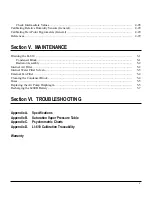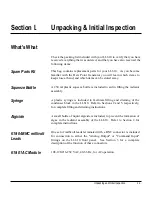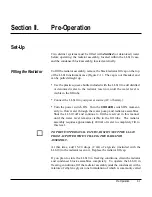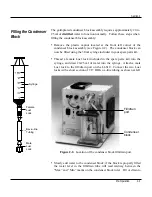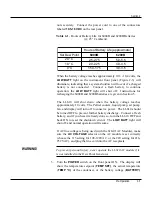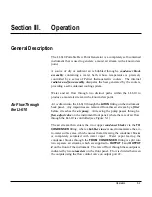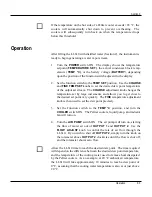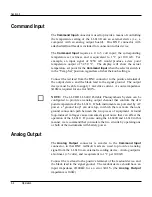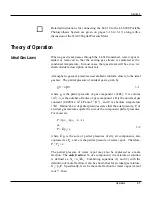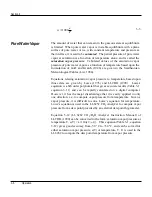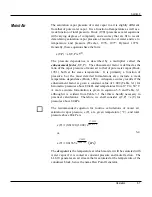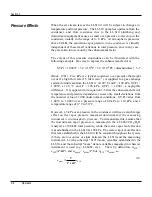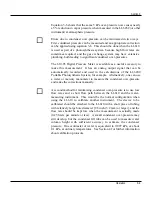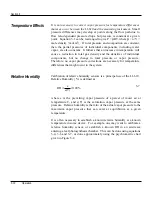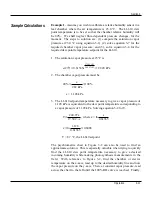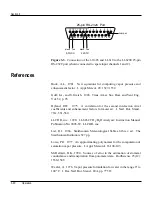
Section 3
3-6
Operation
w
e
P
=
1000
3-3
Pure Water Vapor
The amount of water that can remain in the gaseous state at equilibrium
is limited. When pure water vapor is in stable equilibrium with a plane
surface of pure water or ice, with constant temperature and pressure at
the interface, it is said to be saturated. The partial pressure of pure water
vapor at saturation is a function of temperature alone, and is called the
saturation vapor pressure. Tabulated values of the saturation vapor
pressure of pure water vapor as a function of temperature based upon the
formulation of Goff and Gratch (1946) are given in the Smithsonian
Meteorological Tables (List, 1984).
Equations relating saturation vapor pressure to temperature based upon
those data are given by Lowe (1976) and LI-COR (1990). Lowe's
equation is a 6th order polynomial that gives accurate results (Table 3-1,
equation 3-11) and can be rapidly calculated on a digital computer.
However, it has the major disadvantage that it is easily applied in only
one direction, i.e., to compute vapor pressure from temperature. Given a
vapor pressure, it is difficult to solve Lowe’s equation for temperature.
Lowe's equation is used in the LI-6252 CO
2
Analyzer to compute vapor
pressure from a dew point provided by an external dew point hygrometer.
Equation 5-12 (LI-6262 CO
2
/H
2
O Analyzer Instruction Manual) of
LI-COR (1990) can be converted to the form: saturation vapor pressure at
temperature T, e(T) = a
×
10
[bT/(c+T)]
. This equation (Table 3-1, equation
3-12) gives good accuracy from -50 °C to +50 °C, and can be solved for
either saturation vapor pressure, e(T) or temperature, T. It is used in the
LI-6262 to compute the dew point temperature from vapor pressure.

